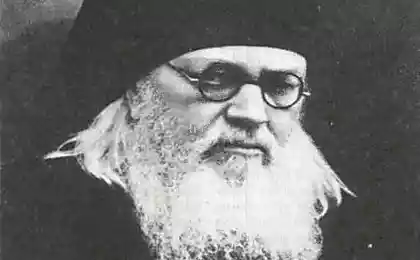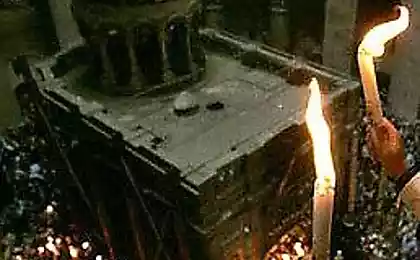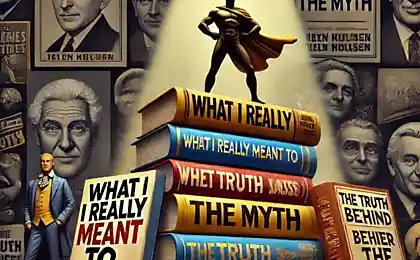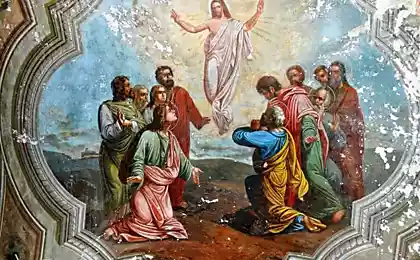283
Why St. Christopher is depicted on icons with the head of a dog and who he really was
In church legends there are many unusual and sometimes amazing legends. Throughout history, the holy Great Martyrs carried the word of God, glorified the Savior and went for this to unknown exploits. The story of every saint is worthy of learning and inspiration. However, among the martyrs there are mysterious and mysterious characters. For example, St. Christopher.
View this post on Instagram
The mystery of St. Christopher. History is not only more unusual than we imagine, it is more unusual than we can imagine. May 9 in the new (May 22 old) style is the day of St. Christopher. He was one of the most important figures in Christianity. About the origins of this image in the article. Let's start with Christianity. In the sacristy of the Pokrovsky Cathedral of Rogozhskaya Sloboda there is an ancient icon of the holy martyr Christopher, traditionally depicted with the head of a dog or horse. The image of this saint is so interesting and multifaceted that it requires a detailed study of the origin of the tradition of depicting the saint in this way, because after the Nikonian reform, his image fell under an unmotivated ban. Since 1722, in Russia, all his images in churches were scraped and painted over. Read more on the link?? view-w.ru 2020/02/28/tajna-svyatogo-ristofora-neristianskie-istoki-obraza/ #HolyChristopher #mystery
A post shared by Picture of the World (@view.w.ru) on Feb 28, 2020 at 2:40am PST
Many churches hold amazing icons of St. Christopher, traditionally depicted with the head of a dog or horse. The image of the saint is unusual, interesting and always causes a lot of questions. Editorial "Site" I decided to find out what was going on.
The life of the saint informs us that before baptism he bore the name Reprev. During the reign of Emperor Decius Trajan, he was captured by the Romans. He later served in the Roman cohort. But this is the most common part of his story.
View this post on Instagram
My love. Saint Christopher. St. Christopher Pseglavets is my love forever! We went to the Russian Icon Museum to see it. In total, there are about 10 icons of Pseglavets in Russia. The rest were destroyed in the 18th century after this plot was banned. #today we go tomuseum #HolyChristopher
A post shared by Zet (@zetiks76) on Apr 21, 2019 at 2:02pm PDT
The fact is that one amazing thing is told about this glorious martyr. Not only was he a man of immense stature and terrifying behaviour. It was believed that his body was ordinary, human, but the head of a dog. Many legends claimed that the saint was a native of the country of Cinemacephalians - representatives of the Pesieglavtsi tribe.
The description of such dog-headed people is quite common since ancient times. True, in the Slavic Prologue the pessy view of the saint is rejected. Many claimed that his appearance was simply ugly, which is why such images of him appeared.
View this post on Instagram
Have you ever seen an Orthodox icon with a picture of Cinephaly? It would seem that this image is more appropriate in the ancient Egyptian temple. But this is a Christian martyr, who in paganism bore the name Reprev, and after baptism became a holy warrior Christopher Pseglavets. ? There are several legends about his life. One says that he was a man of enormous stature and with an ugly face, from a tribe of wild people with dog heads. Another reports that the saint was very handsome, and in order to avoid temptations, he begged the Lord to disfigure his appearance. ? In Orthodoxy, Christopher was often depicted as a psoglav. But in 1722, the icons of Christophorus "with a dog head" were banned as "against nature, history and truth itself." The Church argues that the unusual appearance of the saint should be understood symbolically, as a state of rudeness and ferocity during his stay as a pagan. After the ban, Christopher is depicted as a man-warrior. Many icons are destroyed or rewritten. The icon of the XVIII century with the image of St. Christopher Pseglavets entered the Pskov Museum in the 1930s from the Trinity Cathedral. In his right hand, Christopher holds the cross, the attribute of martyrdom, in his left, the sword. ?️ The second icon of the XVII century came from the church of Nikola Pogost Lyubyatovo in Pskov. #pskov #gold ring #gold ring #golden ring Russia?? #holyChristopher #psepseglavets #stchristopher #sancristobal #proverbal
A post shared by Elena Poddubnaya (@elenapru) on Sep 5, 2019 at 9:52pm PDT
There is also a legend that Christopher from birth was beautiful and seductive. In order to avoid temptation, he asked the Lord to give him an ugly appearance. After that, he looked like a dog. What experts think about this, we will tell later, but for now we will talk about the exploits of the saint.
It is known that at the time he was captured, he did not possess the gift of human speech. He prayed to God. The Lord sent an angel to him who said, “Courage, Reprev!” and touched his mouth and gave him the opportunity to speak. After that, he began to bring the word of God to the people and rebuke those who persecute Christians.
View this post on Instagram
I have two questions for you today: 1. If you’ve heard of the church’s rejection of dogs, they’re also called the devil’s accomplices. To my mother, the pope openly said: don’t start a dog anymore, only a cat 2. Let's discuss if you're interested in the topic. #dogs #dogs #alternative history #church #cinemaphaly #pseglavtsy #holyChristophore #faith ancestors #old Orthodox Church
A post shared by Vera Lebedeva (@faithswanle) on Feb 29, 2020 at 3:46am PST
For his actions, a certain Bacchus subjected the saint to a cruel beating. But the answer to the beatings was humility. Reprev suffered beatings for the commandment of Christ. Two hundred men were sent to take him to the emperor. The way was not close, the soldiers walked for a long time, and there was not enough bread for everyone. Then the dry branch in the hands of the prisoner blossomed and multiplied the food of the soldiers.
View this post on Instagram
Only in Sviyazhsk, in the main cathedral of the Assumption Monastery, you can see the image of a saint ... with a horse's head. This is the martyr Christopher, who suffered for Christ’s faith in the third century. In the life of the saint it is said that he was a Roman warrior-rich man. For his ugly appearance, he was called Reprev, which means “outcast.” Besides, the poor man couldn't talk. In one of the battles Reprev was captured and began to fervently ask God for help. An angel appeared to him, touched the captive’s mouth, and he found the gift of speech. After this miracle, Reprev – in the baptism of Christopher – began everywhere to denounce the persecutors of Christians and himself to work miracles, showing the Gentiles the glory of the Lord. The emperor ordered that Christopher be captured and delivered to the palace. But along the way, all the two hundred soldiers who accompanied the captive accepted the faith of Christ. The enraged emperor ordered Christopher to be executed and his head cut off. Probably, in memory of the ugly, almost beastly appearance, the saint was depicted on ancient icons either with a horse or with a dog's head. In the eighteenth and nineteenth centuries, the Church struggled with such images. One of the abbots of the Assumption Monastery even wanted to rewrite the cathedral frescoes, but the Synod forbade this, noting the exceptional importance of the ancient painting. Indeed, the frescoes of the Assumption Church differ significantly from the Pskov, Novgorod and Moscow samples. Unusual and the choice of subjects: “Rest of God after the creation of the world”, “Incarnation of the God of the Word”, “Crucified Christ on the breast of God of Sabaoth”. And in the altar part of the temple on the fresco “The Procession of the Righteous to Paradise” you can see ... even Ivan the Terrible. This is the only lifetime image of the young king that has survived to this day. The painting of the Assumption Cathedral is recognized as a world treasure. It is put on a par with the frescoes of Dionysius in the Ferapontov Monastery. ► #pilgrimage #pilgrimage #pilgrimage #pilgrimage_tour #pilgrimage of the Moscow Patriarchate #prayer #faith #orthodoxy #pilgrimage service #Sviyazhsk #Uspensky CathedralSviyazhsk #uniquefresks #holyChristofor #PilgrimagesKazan
A post shared by Pilgrimage Center (@poklonnik.ru) on Oct 21, 2019 at 12:01am PDT
At that moment the army believed in the power of the Lord. Together with their savior, they were later baptized by the Bishop of Antioch. Then the saint took the name Christopher. When the saint was brought before the emperor, instead of anger, the ruler experienced only trembling before this man. He fell to his knees and only after a while he recovered.
Thoughts of punishment did not leave him. But he decided to carry out the punishment. He ordered two beautiful women to seduce him and incline him to sin. However, the saint began to teach prostitutes faith in Christ and preach the word of God. The girls then declared themselves Christians. The emperor punished them severely.
After that, the emperor tested Christopher himself. However, the saint did not suffer, only telling everyone that the Lord gave him enough strength to endure everything. Many people then turned to Christ. However, the emperor was adamant and ordered the execution of the saint.
View this post on Instagram
#holyChristopher #stchristoforo #sancristoforo #cinocefalo #icon #icon #icon #icon #orthodoicons #orthodoart #iconos #ikonos #icons #artesacra #iconografia #iconography #iconografiabizantina #iconografiacristiana #sacredart #orthodoxy #Orthodox icons #orthodox art #sacredimages #christianart #christianart #ecular art #nos #nodulia #nodulia #iodulia #ioconodulia #byzine
A post shared by iconodulia (@iconodulia) on Jun 25, 2019 at 4:47am PDT
Even after the transition to eternal life, the saint did not cease to work miracles. The relics and head of the saint, which had been kept for some time in Constantinople, were then transported to the island of Rab in Croatia. When the Normans invaded the island and besieged the city of Rab, the townspeople placed the relics of Christopher on the wall. Miraculously, the wind changed and the ships drifted away from the island.
Saint Christopher is still revered today, especially in Spain. In Orthodoxy, he is often depicted as a pedigree head, which sometimes shocks believers. However, the synaxari point out that the appearance of St. Christopher should be perceived only as a symbol. His appearance indicates rudeness and ferocity during the period of being a pagan.
View this post on Instagram
This 17th century Russian icon of St Christopher (detail) (32 27 cm) was sold by Morsink Icon Gallery and is currently part of a private collection in the USA. The martyr Christopher of Lycia (d.249) is known as the Cynocephalus or Dog-headed. On the icon the saint is depicted with the head of a dog. Such images may carry echoes of the Egyptian dog-headed god, Anubis. #russianicon #russianicons #StChristopher #martyr #Lycia #Dogheaded #Cynocephalus #17thcentury #Russianicon #RussianIconography #SaintChristophore #martyr #psicon #Orthodoxy #17th century #amsterdam #artgallery #Kicon #kicon #kicons #tgreeaf #teficon #Greichon #Greekon #Satrict #molfon #Mesteficon #Auticon
A post shared by Morsink Icon Gallery (@morsinkicongallery) on May 11, 2018 at 9:00am PDT
An interesting and unusual story from which you can learn your own moral lessons. For example, the essence of a person does not lie in his appearance. And the idea that appearances can be deceiving. Have you ever heard the story of a saint?
View this post on Instagram
The mystery of St. Christopher. History is not only more unusual than we imagine, it is more unusual than we can imagine. May 9 in the new (May 22 old) style is the day of St. Christopher. He was one of the most important figures in Christianity. About the origins of this image in the article. Let's start with Christianity. In the sacristy of the Pokrovsky Cathedral of Rogozhskaya Sloboda there is an ancient icon of the holy martyr Christopher, traditionally depicted with the head of a dog or horse. The image of this saint is so interesting and multifaceted that it requires a detailed study of the origin of the tradition of depicting the saint in this way, because after the Nikonian reform, his image fell under an unmotivated ban. Since 1722, in Russia, all his images in churches were scraped and painted over. Read more on the link?? view-w.ru 2020/02/28/tajna-svyatogo-ristofora-neristianskie-istoki-obraza/ #HolyChristopher #mystery
A post shared by Picture of the World (@view.w.ru) on Feb 28, 2020 at 2:40am PST
Many churches hold amazing icons of St. Christopher, traditionally depicted with the head of a dog or horse. The image of the saint is unusual, interesting and always causes a lot of questions. Editorial "Site" I decided to find out what was going on.
The life of the saint informs us that before baptism he bore the name Reprev. During the reign of Emperor Decius Trajan, he was captured by the Romans. He later served in the Roman cohort. But this is the most common part of his story.
View this post on Instagram
My love. Saint Christopher. St. Christopher Pseglavets is my love forever! We went to the Russian Icon Museum to see it. In total, there are about 10 icons of Pseglavets in Russia. The rest were destroyed in the 18th century after this plot was banned. #today we go tomuseum #HolyChristopher
A post shared by Zet (@zetiks76) on Apr 21, 2019 at 2:02pm PDT
The fact is that one amazing thing is told about this glorious martyr. Not only was he a man of immense stature and terrifying behaviour. It was believed that his body was ordinary, human, but the head of a dog. Many legends claimed that the saint was a native of the country of Cinemacephalians - representatives of the Pesieglavtsi tribe.
The description of such dog-headed people is quite common since ancient times. True, in the Slavic Prologue the pessy view of the saint is rejected. Many claimed that his appearance was simply ugly, which is why such images of him appeared.
View this post on Instagram
Have you ever seen an Orthodox icon with a picture of Cinephaly? It would seem that this image is more appropriate in the ancient Egyptian temple. But this is a Christian martyr, who in paganism bore the name Reprev, and after baptism became a holy warrior Christopher Pseglavets. ? There are several legends about his life. One says that he was a man of enormous stature and with an ugly face, from a tribe of wild people with dog heads. Another reports that the saint was very handsome, and in order to avoid temptations, he begged the Lord to disfigure his appearance. ? In Orthodoxy, Christopher was often depicted as a psoglav. But in 1722, the icons of Christophorus "with a dog head" were banned as "against nature, history and truth itself." The Church argues that the unusual appearance of the saint should be understood symbolically, as a state of rudeness and ferocity during his stay as a pagan. After the ban, Christopher is depicted as a man-warrior. Many icons are destroyed or rewritten. The icon of the XVIII century with the image of St. Christopher Pseglavets entered the Pskov Museum in the 1930s from the Trinity Cathedral. In his right hand, Christopher holds the cross, the attribute of martyrdom, in his left, the sword. ?️ The second icon of the XVII century came from the church of Nikola Pogost Lyubyatovo in Pskov. #pskov #gold ring #gold ring #golden ring Russia?? #holyChristopher #psepseglavets #stchristopher #sancristobal #proverbal
A post shared by Elena Poddubnaya (@elenapru) on Sep 5, 2019 at 9:52pm PDT
There is also a legend that Christopher from birth was beautiful and seductive. In order to avoid temptation, he asked the Lord to give him an ugly appearance. After that, he looked like a dog. What experts think about this, we will tell later, but for now we will talk about the exploits of the saint.
It is known that at the time he was captured, he did not possess the gift of human speech. He prayed to God. The Lord sent an angel to him who said, “Courage, Reprev!” and touched his mouth and gave him the opportunity to speak. After that, he began to bring the word of God to the people and rebuke those who persecute Christians.
View this post on Instagram
I have two questions for you today: 1. If you’ve heard of the church’s rejection of dogs, they’re also called the devil’s accomplices. To my mother, the pope openly said: don’t start a dog anymore, only a cat 2. Let's discuss if you're interested in the topic. #dogs #dogs #alternative history #church #cinemaphaly #pseglavtsy #holyChristophore #faith ancestors #old Orthodox Church
A post shared by Vera Lebedeva (@faithswanle) on Feb 29, 2020 at 3:46am PST
For his actions, a certain Bacchus subjected the saint to a cruel beating. But the answer to the beatings was humility. Reprev suffered beatings for the commandment of Christ. Two hundred men were sent to take him to the emperor. The way was not close, the soldiers walked for a long time, and there was not enough bread for everyone. Then the dry branch in the hands of the prisoner blossomed and multiplied the food of the soldiers.
View this post on Instagram
Only in Sviyazhsk, in the main cathedral of the Assumption Monastery, you can see the image of a saint ... with a horse's head. This is the martyr Christopher, who suffered for Christ’s faith in the third century. In the life of the saint it is said that he was a Roman warrior-rich man. For his ugly appearance, he was called Reprev, which means “outcast.” Besides, the poor man couldn't talk. In one of the battles Reprev was captured and began to fervently ask God for help. An angel appeared to him, touched the captive’s mouth, and he found the gift of speech. After this miracle, Reprev – in the baptism of Christopher – began everywhere to denounce the persecutors of Christians and himself to work miracles, showing the Gentiles the glory of the Lord. The emperor ordered that Christopher be captured and delivered to the palace. But along the way, all the two hundred soldiers who accompanied the captive accepted the faith of Christ. The enraged emperor ordered Christopher to be executed and his head cut off. Probably, in memory of the ugly, almost beastly appearance, the saint was depicted on ancient icons either with a horse or with a dog's head. In the eighteenth and nineteenth centuries, the Church struggled with such images. One of the abbots of the Assumption Monastery even wanted to rewrite the cathedral frescoes, but the Synod forbade this, noting the exceptional importance of the ancient painting. Indeed, the frescoes of the Assumption Church differ significantly from the Pskov, Novgorod and Moscow samples. Unusual and the choice of subjects: “Rest of God after the creation of the world”, “Incarnation of the God of the Word”, “Crucified Christ on the breast of God of Sabaoth”. And in the altar part of the temple on the fresco “The Procession of the Righteous to Paradise” you can see ... even Ivan the Terrible. This is the only lifetime image of the young king that has survived to this day. The painting of the Assumption Cathedral is recognized as a world treasure. It is put on a par with the frescoes of Dionysius in the Ferapontov Monastery. ► #pilgrimage #pilgrimage #pilgrimage #pilgrimage_tour #pilgrimage of the Moscow Patriarchate #prayer #faith #orthodoxy #pilgrimage service #Sviyazhsk #Uspensky CathedralSviyazhsk #uniquefresks #holyChristofor #PilgrimagesKazan
A post shared by Pilgrimage Center (@poklonnik.ru) on Oct 21, 2019 at 12:01am PDT
At that moment the army believed in the power of the Lord. Together with their savior, they were later baptized by the Bishop of Antioch. Then the saint took the name Christopher. When the saint was brought before the emperor, instead of anger, the ruler experienced only trembling before this man. He fell to his knees and only after a while he recovered.
Thoughts of punishment did not leave him. But he decided to carry out the punishment. He ordered two beautiful women to seduce him and incline him to sin. However, the saint began to teach prostitutes faith in Christ and preach the word of God. The girls then declared themselves Christians. The emperor punished them severely.
After that, the emperor tested Christopher himself. However, the saint did not suffer, only telling everyone that the Lord gave him enough strength to endure everything. Many people then turned to Christ. However, the emperor was adamant and ordered the execution of the saint.
View this post on Instagram
#holyChristopher #stchristoforo #sancristoforo #cinocefalo #icon #icon #icon #icon #orthodoicons #orthodoart #iconos #ikonos #icons #artesacra #iconografia #iconography #iconografiabizantina #iconografiacristiana #sacredart #orthodoxy #Orthodox icons #orthodox art #sacredimages #christianart #christianart #ecular art #nos #nodulia #nodulia #iodulia #ioconodulia #byzine
A post shared by iconodulia (@iconodulia) on Jun 25, 2019 at 4:47am PDT
Even after the transition to eternal life, the saint did not cease to work miracles. The relics and head of the saint, which had been kept for some time in Constantinople, were then transported to the island of Rab in Croatia. When the Normans invaded the island and besieged the city of Rab, the townspeople placed the relics of Christopher on the wall. Miraculously, the wind changed and the ships drifted away from the island.
Saint Christopher is still revered today, especially in Spain. In Orthodoxy, he is often depicted as a pedigree head, which sometimes shocks believers. However, the synaxari point out that the appearance of St. Christopher should be perceived only as a symbol. His appearance indicates rudeness and ferocity during the period of being a pagan.
View this post on Instagram
This 17th century Russian icon of St Christopher (detail) (32 27 cm) was sold by Morsink Icon Gallery and is currently part of a private collection in the USA. The martyr Christopher of Lycia (d.249) is known as the Cynocephalus or Dog-headed. On the icon the saint is depicted with the head of a dog. Such images may carry echoes of the Egyptian dog-headed god, Anubis. #russianicon #russianicons #StChristopher #martyr #Lycia #Dogheaded #Cynocephalus #17thcentury #Russianicon #RussianIconography #SaintChristophore #martyr #psicon #Orthodoxy #17th century #amsterdam #artgallery #Kicon #kicon #kicons #tgreeaf #teficon #Greichon #Greekon #Satrict #molfon #Mesteficon #Auticon
A post shared by Morsink Icon Gallery (@morsinkicongallery) on May 11, 2018 at 9:00am PDT
An interesting and unusual story from which you can learn your own moral lessons. For example, the essence of a person does not lie in his appearance. And the idea that appearances can be deceiving. Have you ever heard the story of a saint?























